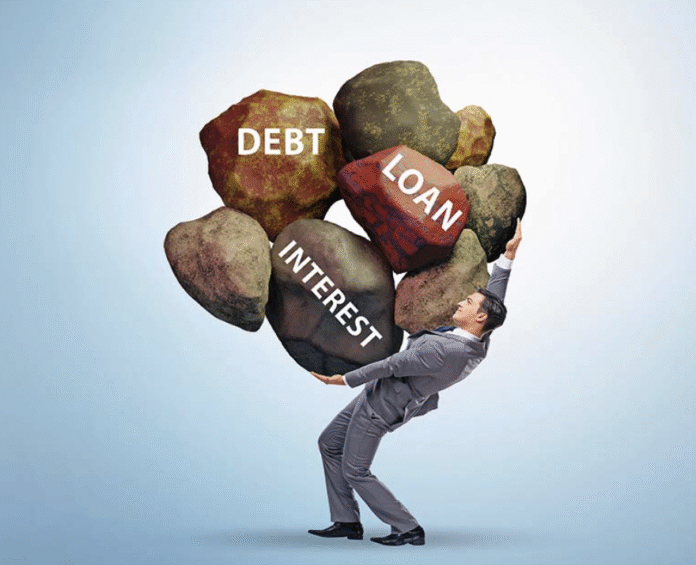Debt is often sold as a bridge to opportunity—a means to buy a home, invest in education, or start a business. In the modern global economy, nearly everyone borrows, from governments to families. Yet for all its promises, debt comes with a hidden price tag that’s larger and more persistent than most realize. The true cost of debt isn’t just the amount borrowed or the interest rate advertised by lenders. It’s a slow drain—interest piling on interest, payments eating into future income, and fees multiplying over time. In the end, interest can eat far more than you think.
Why We Borrow—and Why it’s Dangerous
Borrowing is a vital part of economic life. Mortgages make home ownership possible. Student loans finance education and upward mobility. Credit cards smooth out cash flow and help in emergencies. But what seems helpful at first can quietly take control. The problem is that debt, unlike other expenses, grows if left unchecked—snowballing through compounding interest, late fees, and even missed opportunity costs. These hidden expenses often remain out of sight until their impact becomes impossible to ignore.
The Snowball Effect: Simple Interest vs. Compound Interest
Simple interest is straightforward: you pay a fixed percentage of the amount you owed at the start. But most debts, especially credit cards and revolving loans, use compound interest—where you get charged interest on the original amount and the unpaid interest that’s already accumulated. The math is simple yet punishing: the longer you carry debt, the faster it grows, and the more you owe in the end.
For example, if you borrow $2,000 at a 15% annual interest rate on a credit card and make only minimum payments, you could end up paying over $4,000 in total after several years—twice your original purchase. That’s the cost of compounding at work, mostly invisible to borrowers until it’s too late.
Fees, Penalties, and the Real Cost of Debt
Advertised interest rates are only part of the story. Financial institutions often add late fees, annual charges, processing fees, and prepayment penalties to the bill. Missed a payment? Expect a penalty fee and a spike in your interest rate. Transferred a balance? There’s often a transfer fee. These charges are typically buried in the fine print, but over months and years they add up, further eroding your wealth and widening the gap between what you borrowed and what you repay.
Debt and Cash Flow: The Chains on Your Future
Every dollar spent on repaying debt—and especially interest—is a dollar you can’t use for saving, investing, or living. Large loans or maxed-out credit cards drain your monthly cash flow, making emergencies harder to handle and dreams more distant. Instead of using future earnings to build wealth, you use them to pay for purchases made years earlier.
This opportunity cost is as real as the interest you pay: money that could grow through investing is instead funneled to banks and lenders. Over a lifetime, the difference can be staggering.
The Psychological Toll: Stress, Health, and Happiness
Research consistently shows that high debt levels are linked to anxiety, depression, and even physical health problems. The constant pressure to meet payment deadlines, the tension of living paycheck to paycheck, and the guilt of mounting balances affect your mood, focus, relationships, and overall well-being.
These hidden emotional costs rarely appear on a lender’s disclosure form. But they can be the most damaging, grinding away at your quality of life while the numbers in your account quietly shrink.
How to Break the Cycle: Smarter Borrowing and Repayment
1. Understand True Cost Before Borrowing
Use online calculators to see how much you’ll really pay over the life of a loan.
Compare total repayment—not just monthly payments or headline interest rates.
Factor in all extra charges, fees, and possible penalties.
2. Prioritize High-Interest Debt
Pay down the debts with the highest interest rates first; the savings can be dramatic.
Avoid minimum payments. Even small extra payments can shave years and thousands off your debt load.
3. Avoid Unnecessary Fees
Automate payments to avoid late charges.
Read agreement terms to sidestep hidden costs like annual fees or balance transfer fees.
4. Consider the Opportunity Cost
Remember: Every dollar to interest is a dollar you don’t invest or save for goals like retirement, travel, or emergencies.
5. Consolidate—But Carefully
Consolidation loans or balance transfers can lower your interest, but watch for fees and the temptation to rack up new debt once old cards are paid off.
Global Lessons: Debt in Different Cultures
Globally, the hidden costs of debt affect people in unique ways. In some countries, high inflation can quickly make old debts unmanageable. In others, predatory lenders charge triple-digit interest rates, locking people into intergenerational cycles of poverty. Yet the basics are universal: interest compounds, and the more you borrow (and longer you owe), the more you eventually pay.
Conclusion: Knowledge Is Your Best Defense
Debt is neither good nor bad—it’s a tool. But like any tool, it requires respect and understanding of the hidden dangers. Whether you’re borrowing for school, a home, or simply to cover an emergency, know that the costs go far beyond the sticker price. Interest, compounding, fees, stress, and lost opportunities all add up, often in ways too subtle to notice until they’ve become overwhelming.
Educate yourself. Plan your payments. Whenever possible, prioritize paying down high-interest debt. And remember: every dollar you save on interest is a dollar you invest in your future—not someone else’s profit margin. The hidden costs of debt are very real, but with awareness and smart planning, you can keep them from eating more than you think.


